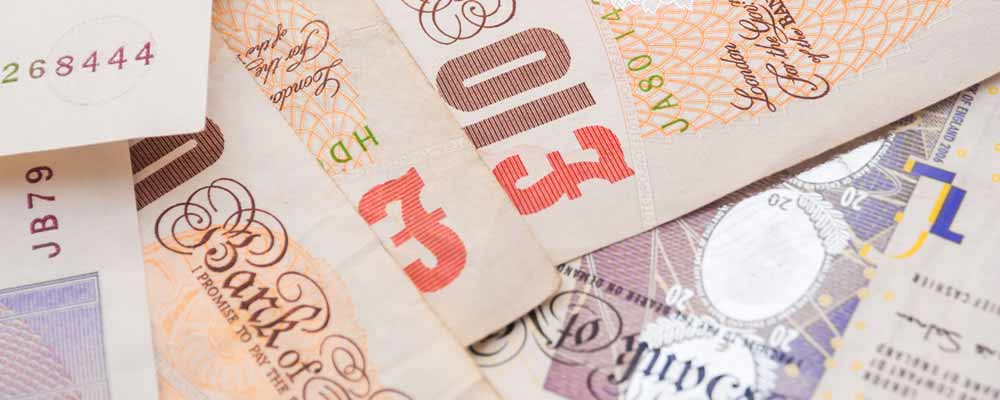There has been little reason for investors to buy back into Pound exchange rates at the start of the week, with the mood towards Sterling dampened by a sharp increase in UK inflation.
- GBP exchange rates dented by rising UK inflation – Markets anticipate imminent overshoot of BoE’s target range
- Euro on muted form ahead of ECB meeting – Prospects of QE tapering remained limited
- Mixed domestic data hampered US Dollar strength – Manufacturing sector continued to show signs of struggling
- Higher US inflation forecast to weaken GBP USD exchange rate further – Odds of December Fed rate hike to heighten
Nevertheless, with the Euro on softer form the GBP EUR exchange rate has not taken an overly severe hit from this latest discouraging data.
Pound (GBP) Under Pressure after UK Inflation Jumped in September
Brexit-based jitters continued to hamper the Pound (GBP) as rumours circulated over growing tensions within the UK government. Chancellor of the Exchequer Philip Hammond is reported to have come under fire from colleagues over his push for the UK to retain access to the single market, something which worried markets. The prospect of a hard Brexit remained a significant deterrent to investors, leaving Sterling on the back foot once again.
Adding pressure to the outlook of the Pound, there was an upside surprise from the latest UK Consumer Price Index on Tuesday morning. Although forecasts had pointed towards a rise from 0.6% to 0.9% investors were not encouraged to find that the measure had instead clocked in at 1.0%. This suggests that inflationary pressure could rise faster than anticipated, with the sharp decline of the Pound already feeding through into the UK economy. As economists at RBC Capital Markets noted:
‘On this occasion, and in the coming months (CPI inflation could hit the 2% target in Q1), we think higher inflation is negative news for GBP—the opposite to the typical impact of positive inflation surprises on G10 currencies recently.’
Consequently, Sterling weakened across the board, giving up the modest rally that it had staged at the start of the European session.
Further Sterling volatility is expected on the back of Wednesday’s raft of UK employment data, which could add downside pressure to GBP exchange rates if conditions are shown to have weakened in the wake of the referendum.
GBP EUR Exchange Rate Forecast to Trend Higher Ahead of ECB Meeting
Confidence in the Euro (EUR) has been a little muted at the start of the week, despite September’s finalised Eurozone Consumer Price Index data offering no surprises. While inflationary pressure within the currency union was confirmed to have ticked moderately higher on the year the chances of the European Central Bank (ECB) tapering its quantitative easing program imminently seem increasingly slim. As a result, and with the outlook of the Greek economy remaining far from encouraging, there was little particular incentive for investors to buy into the single currency.
The mood towards the Euro could remain bearish ahead of Thursday’s ECB meeting, with markets not expecting to see any change in policy at this juncture. Nevertheless, if policymakers are found to have adopted a more dovish outlook on monetary policy then the Pound to Euro (GBP EUR) exchange rate is likely to trend higher. With investors hoping that the central bank is more inclined to move away from its easing bias in the near future the single currency is expected to remain under some degree of pressure.
Stronger US Inflation Predicted to Bolster Fed Rate Hike Odds
It was a bit of a mixed bag for the US Dollar (USD) on Monday, with the latest raft of domestic data failing to offer a conclusively positive view of the world’s largest economy. While manufacturing and industrial production figures strengthened on the month this was contrasted by an unexpected decline in the corresponding capacity utilisation index. This suggested that the economy is not in the most robust of shapes, undermining confidence that the Federal Reserve will imminently return to its monetary tightening cycle.
This afternoon’s US inflation data could offer the ‘Greenback’ greater encouragement, however, if price pressures are shown to have strengthened in September. While the Consumer Price Index is not the favoured inflationary measure of the Fed any uptick here would still send a bullish signal. Even so, with markets having largely priced a December interest rate hike into the US Dollar already the Pound to US Dollar (GBP USD) exchange rate may not slump too sharply in the event of a stronger showing.
Current Interbank Exchange Rates
At the time of writing, the Pound to Euro (GBP EUR) exchange rate was trending lower around 1.11, while the Pound to US Dollar (GBP USD) pairing was weakening in the region of 1.22.



